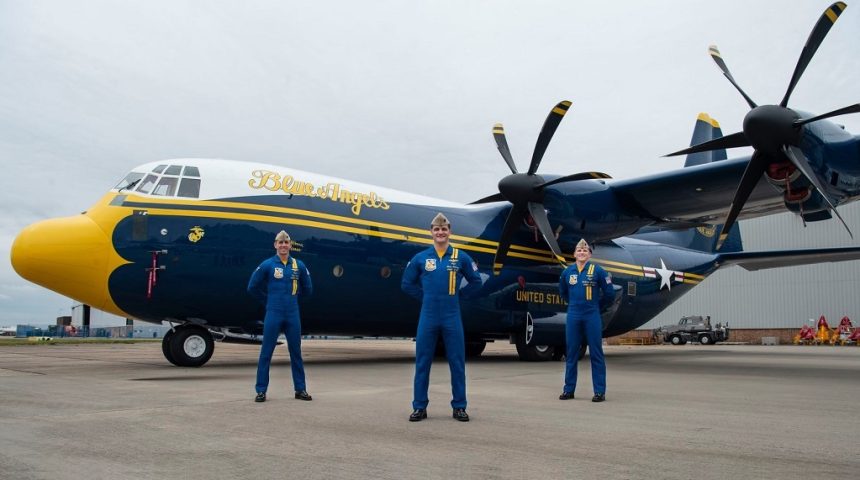The new C-130J will soon replace the C-130T that served as “Fat Albert” until 2019.
After just a little over a year since the replacement was announced, the Blue Angels are preparing to receive the new C-130J that will replace the C-130T “Fat Albert”. The Blue Angels posted today on their Facebook page the first photo of the “Fat Albert” as the team’s pilots and crews arrived in Cambridge, U.K., to perform maintenance tests, including an aircraft systems operational check out and a functional check flight, before departing for the transatlantic flight that will take the aircraft to its new home at Naval Air Station Pensacola, Florida.
With the first photo, the team also highlighted some changes from the previous C-130T paint scheme, like the flight surfaces’ yellow tips, similarly to the team F/A-18s, two yellow stripes along the fuselage, instead of the old single stripe, and the white top changed to a tear drop design, instead of the old full white top along the entire fuselage’s length.
Last month, the Blue Angels shared on social media photos of the C-130’s pilots and crew undergoing their final training phases for the transition from the -T to the -J variant, including simulator training and a low-level proficiency training flight, supported by Marine Aerial Refueler Transport Squadron 234 (VMGR 234) at Naval Air Station Joint Reserve Base Fort Worth.
With support from Marine Aerial Refueler Transport Squadron 234 (VMGR 234), we were able to perform a low-level proficiency training flight over Lake Powell.
Thank you to VMGR-234 for all your support in preparing us for our airframe transition!#USMC#USNavy#SemperFi pic.twitter.com/FqExWfqltI
— Blue Angels (@BlueAngels) June 9, 2020
The “new” Fat Albert is in reality a second-hand aircraft, as explained last year here at TheAviationist:
The “new” C-130J is actually a divested UK aircraft and was chosen because of the major cost savings. According to the statement provided by NAVAIR “cost savings associated with acquisition of the used aircraft and other airworthiness requirements is approximately $50 million less than the cost of a new aircraft.”
The acquisition of the surplus aircraft from the United Kingdom was due to “high operational tempo and current in demand nature of Navy assets” that prevented the Navy from just taking the replacement aircraft from the fleet.
With the arrival of the new C-130J and Super Hornets, the Blue Angels will start the preparations for the 2021 air show season with a totally new aircraft fleet, after the botched 2020 season because of the COVID-19 pandemic that forced the cancellation of almost all the scheduled airshows and the America Strong flyovers to salute the healthcare workers and first responders fighting the pandemic.









